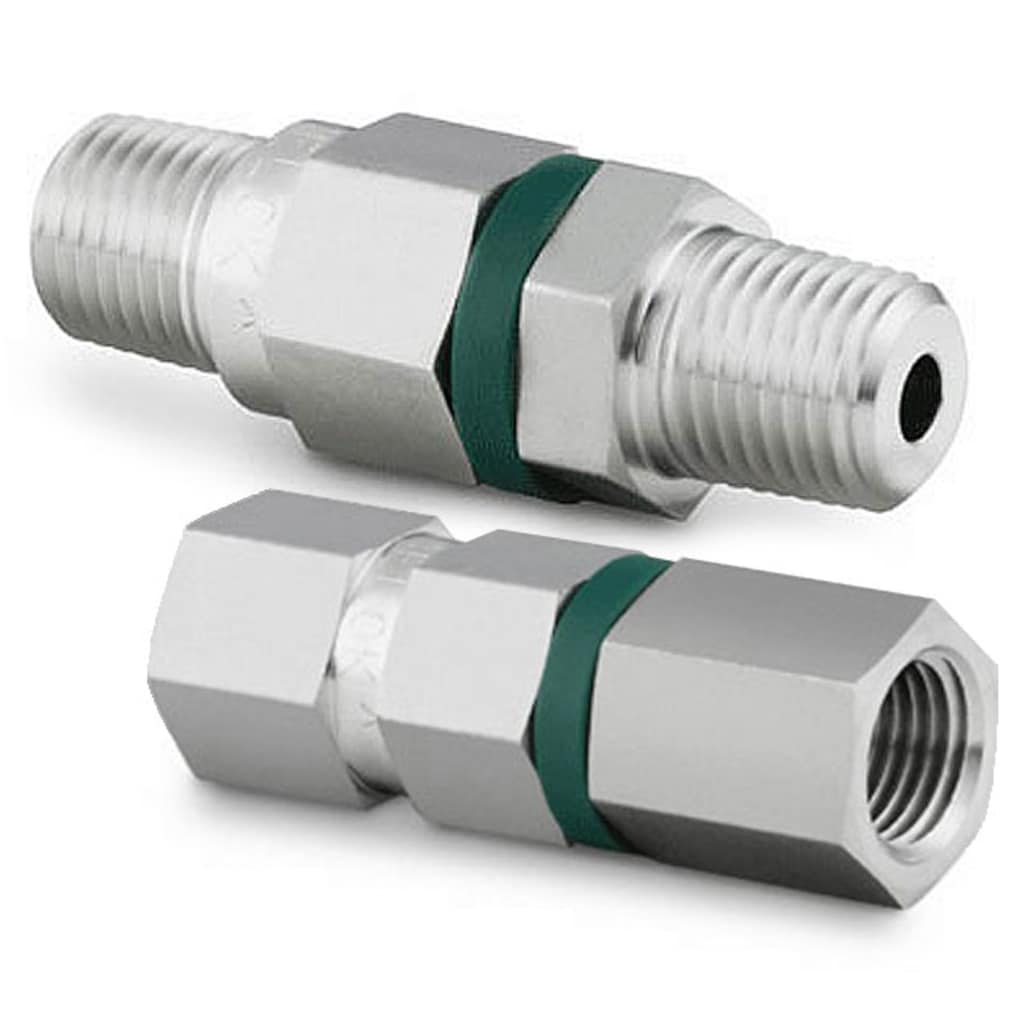
Swagelok® 체크 밸브 및 초과 누출 차단 밸브
Swagelok 인라인 체크 밸브는 일반 용도 및 고순도 애플리케이션에서 역류를 제어하는 제품이며 조절 가능하거나 고정된 크래킹 압력 범위로 공급됩니다. 초과 유량 차단 밸브는 바이패스 메커니즘의 필요성을 없앰으로써 시스템의 무결성과 안전성을 높여줍니다.
체크 밸브 | 한 방향으로 유체 유동을 제어하도록 설계됩니다
초과 유량 차단 밸브 | 다운스트림으로 초과 유량이 방출되는 것을 막습니다
Swagelok® 체크 밸브는 유체의 한 방향 유동만 허용하도록 설계되었습니다. Swagelok 체크 밸브는 일반 서비스에 사용되는 포펫, 리프트, 완전 용접형 버전 또는 중압 또는 고압을 포함한 고순도 애플리케이션 등의 다양한 구조로 공급 가능합니다.
Swagelok 체크 밸브는 다양한 연결구와 씰 재질로 공급 가능하므로, 사용자가 자사 시스템 및 공정 유체와 호환되는 통합하기 쉬운 솔루션을 찾을 수 있습니다. 특정 Swagelok 체크 밸브에는 고순도 애플리케이션에서 시스템 유체를 신뢰성 높게 밀폐할 수 있는 완전 용접형 구조가 적용되어 있으며, 일부는 압력 강하를 줄이고, 무유동 영역을 없애며, 탁월한 누설 무결성을 제공하는 동시에 유량을 극대화할 수 있도록 초고순도 플루오르수지(fluoropolymer)로 구성되고 O-링이 없습니다.
Swagelok® XS 시리즈 초과 유량 밸브에는 다운스트림에서 초과 유량이 발생하면 트립 위치로 이동하여 시스템 유체의 통제되지 않는 방출을 막는 슬롯형 포펫이 있습니다. 그다음, 압력이 균등화되면 재설정됩니다. 이 밸브는 복잡한 바이패스 메커니즘이 필요 없으므로 유지보수 시간이 절감됩니다.
체크 밸브가 올바르게 작동하는지 확인하려면 크래킹 압력과 리씰 압력 사이의 차이를 알아보십시오.
Catégories de clapets anti-retour
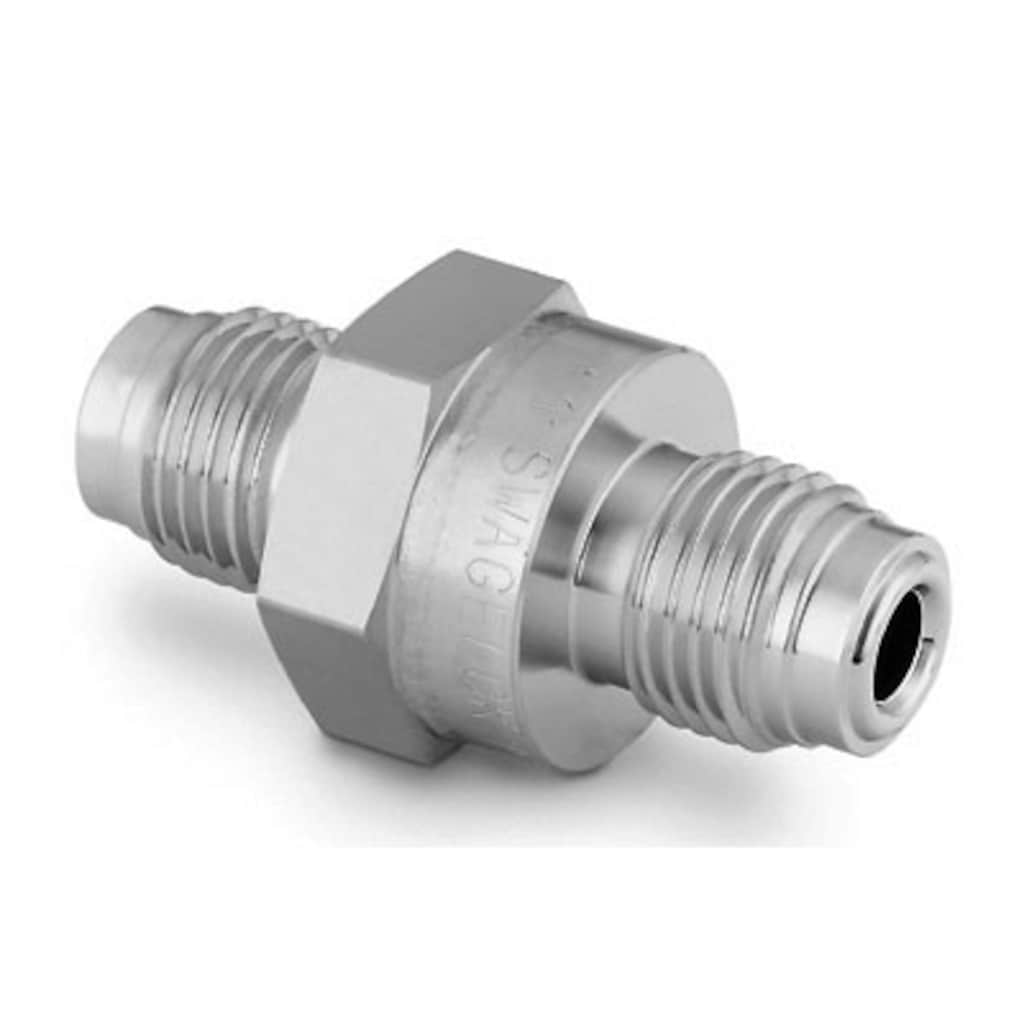
Clapets anti-retour soudés haute pureté, série CW
La structure entièrement soudée des clapets anti-retour haute pureté offre un confinement parfait du fluide du système tandis que l’acier inoxydable 316L utilisé pour le corps permet de gagner en pureté.
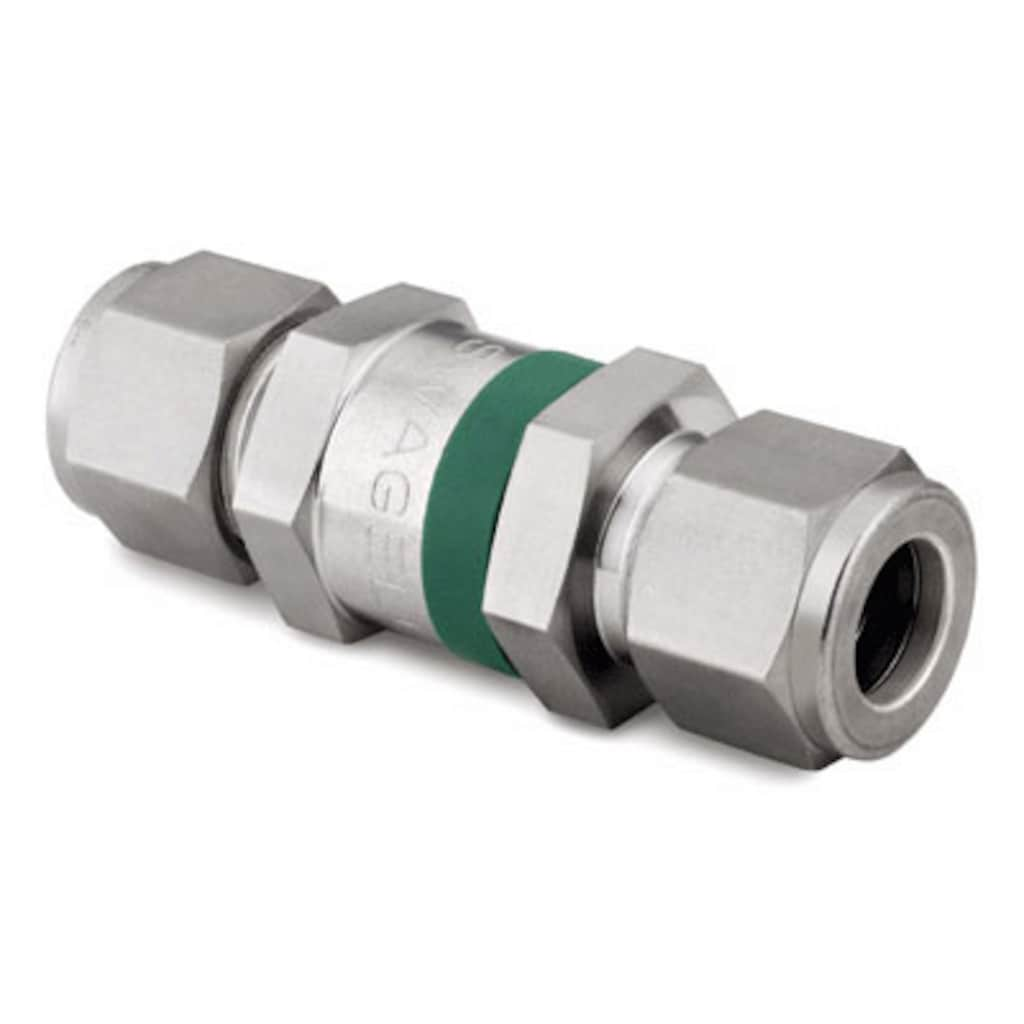
Clapets de sur-débit
Клапаны регулировки избыточного расхода повышают безопасность системы, предотвращая неконтролируемый выброс рабочей среды в случае разрыва линии.
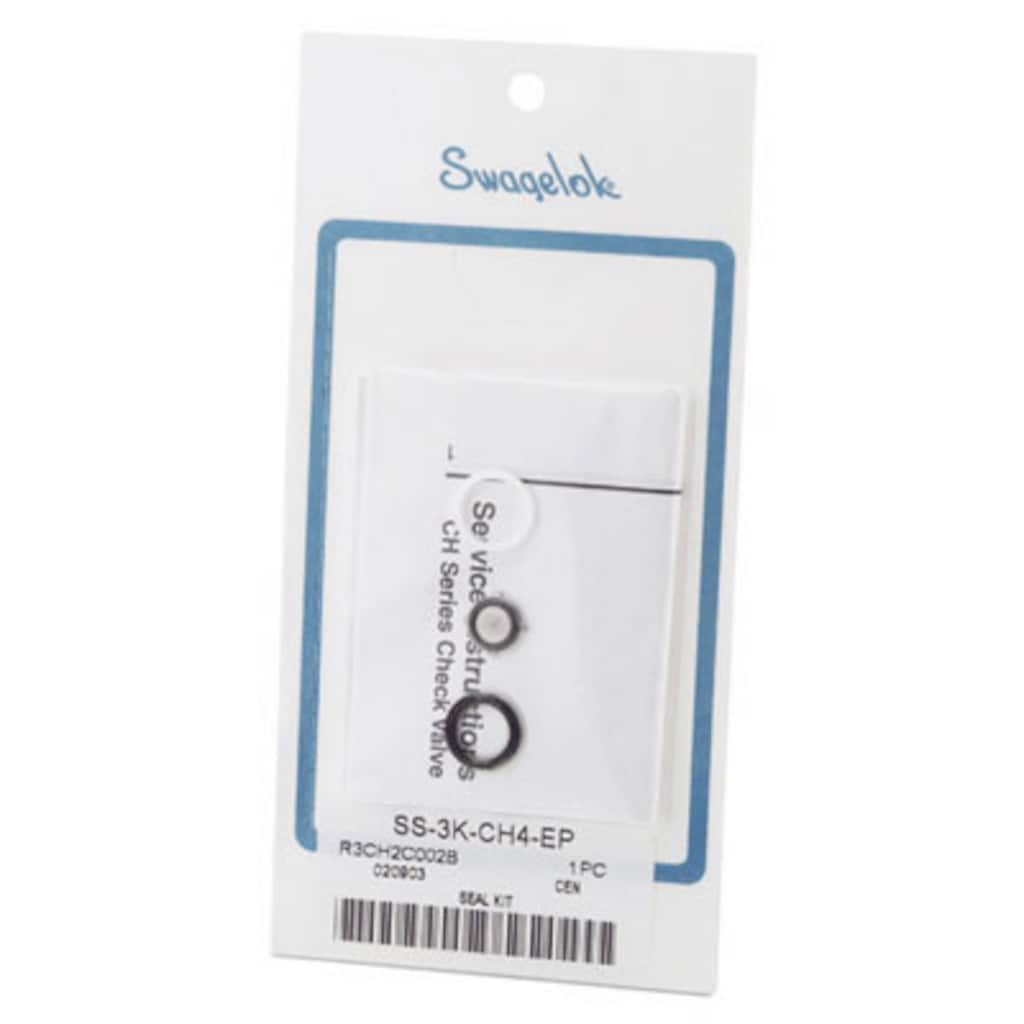
Запасные части и вспомогательное оборудование
Подробнее о защитных колпачках и вспомогательных механизмах для обслуживания обратных клапанов с золотником, включая комплекты для замены пружин, уплотнений и золотников.
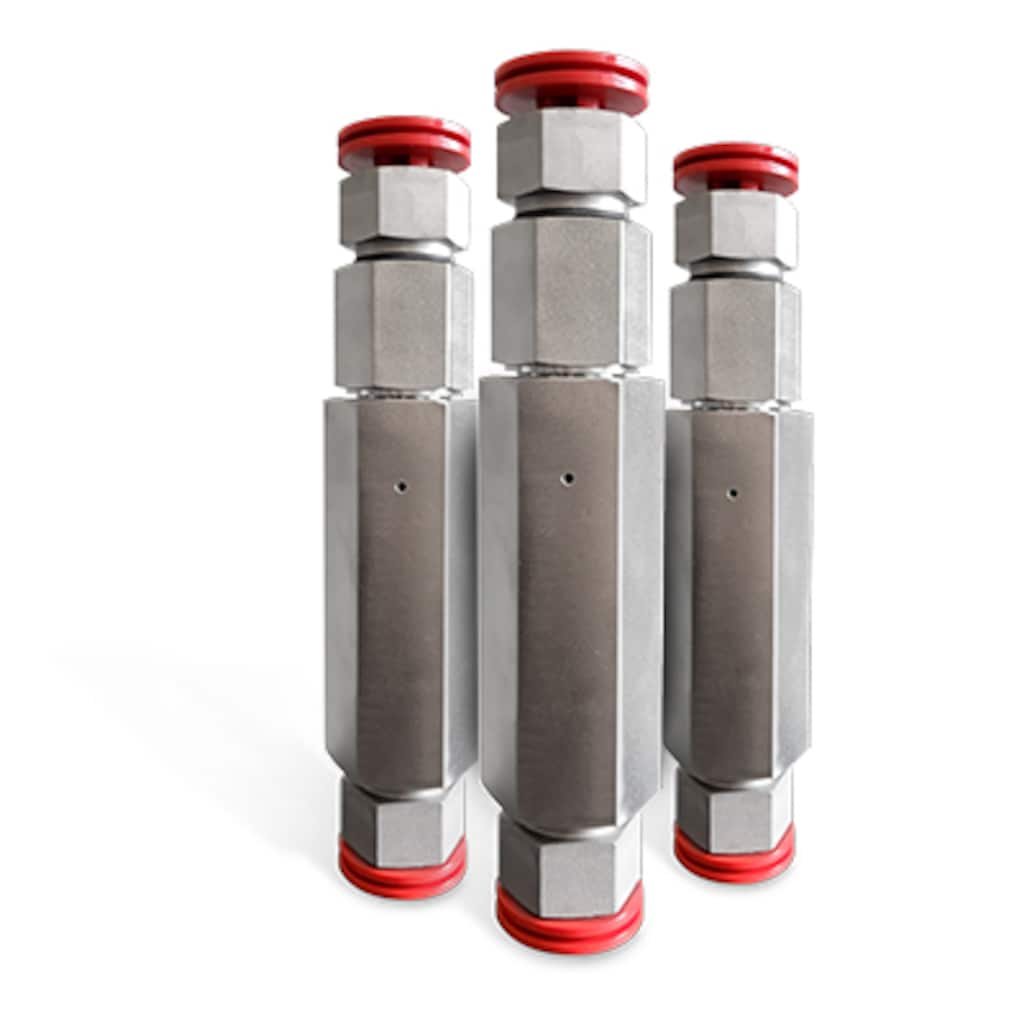
Обратные клапаны для водородных систем
Обратные клапаны Swagelok® серии FK для водородных систем обеспечивают надежную изоляцию технологической среды и работу в условиях высокого давления.
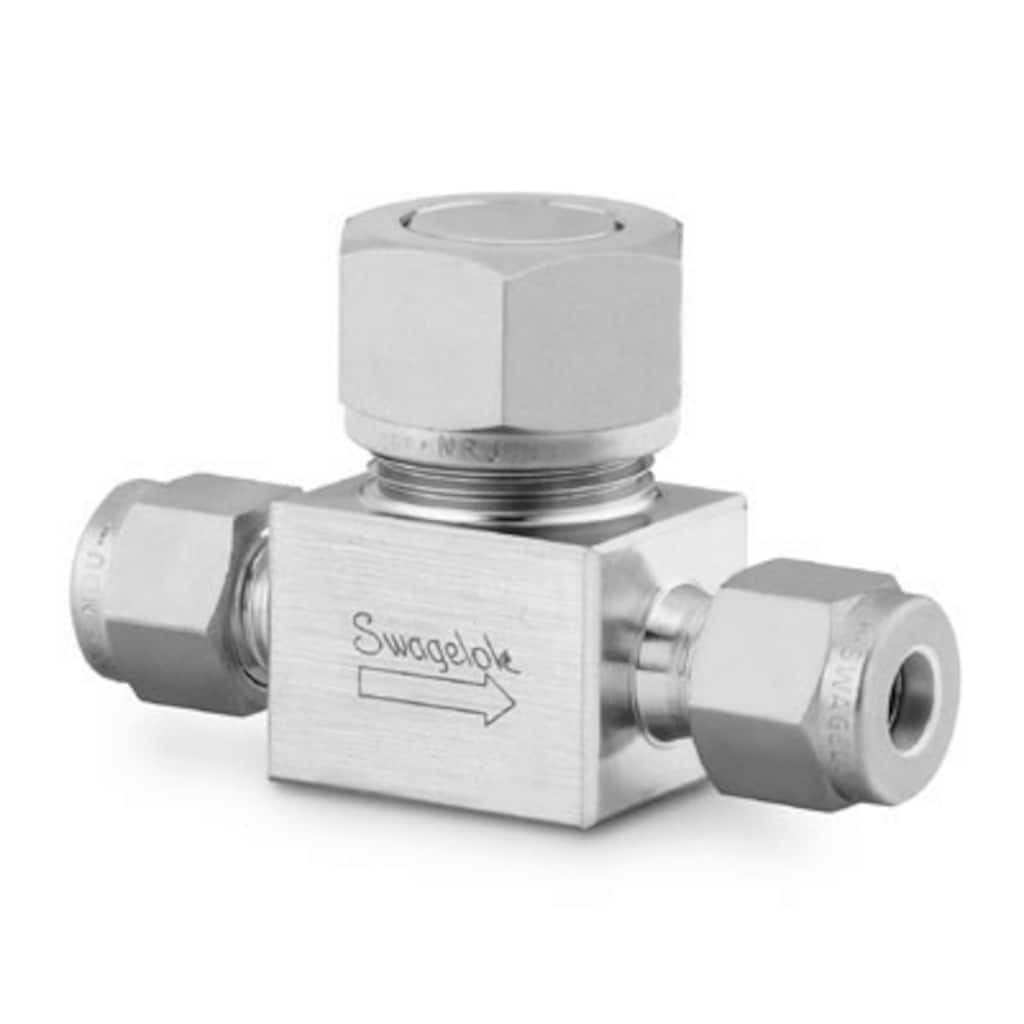
Обратные клапаны с подъемной тарелкой, серия 50
Обратные клапаны с подъемным золотником из нержавеющей стали лимитируют обратный поток вплоть до 413 бар ман (6000 psig) и 482°C (900°F).
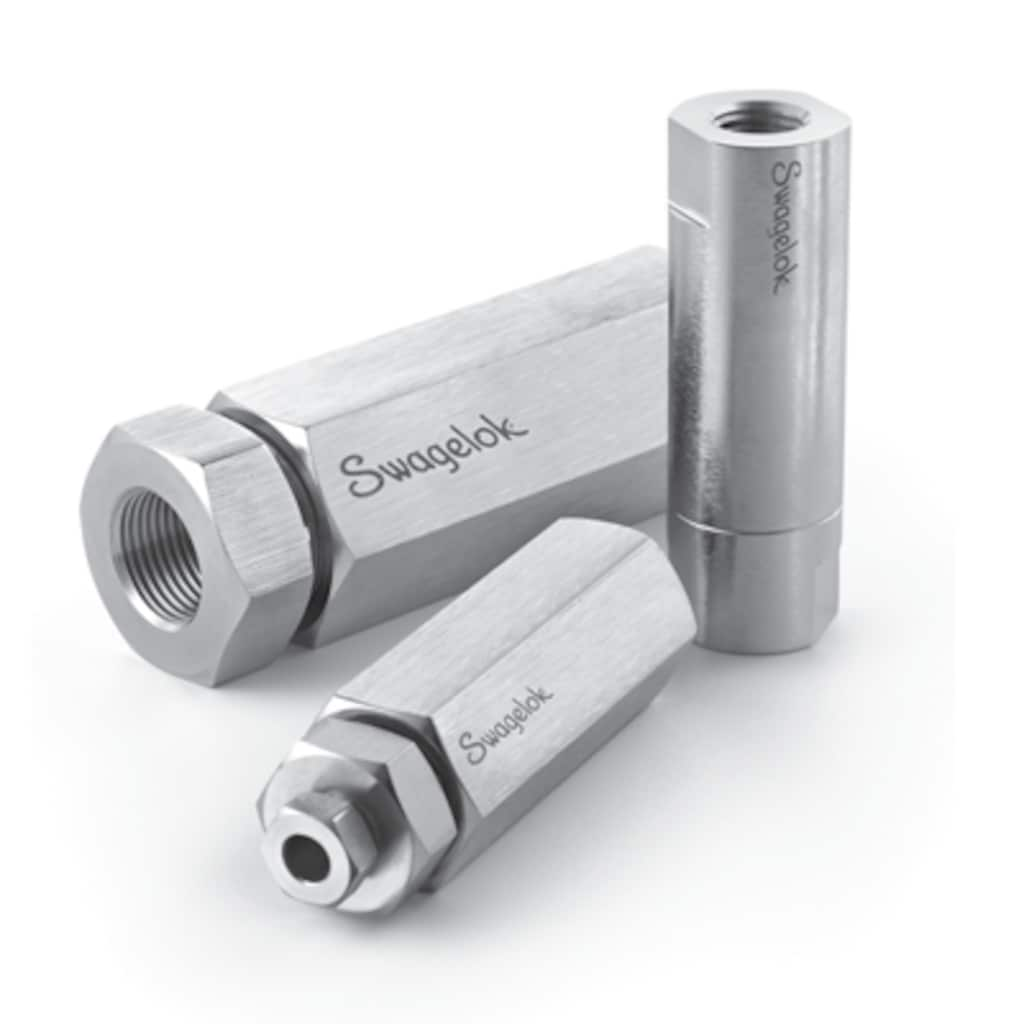
Обратные клапаны среднего давления, серия CV
Обратные клапаны среднего давления предназначены для сдерживания давления в системе и контроля флюидов с остановкой обратного потока.
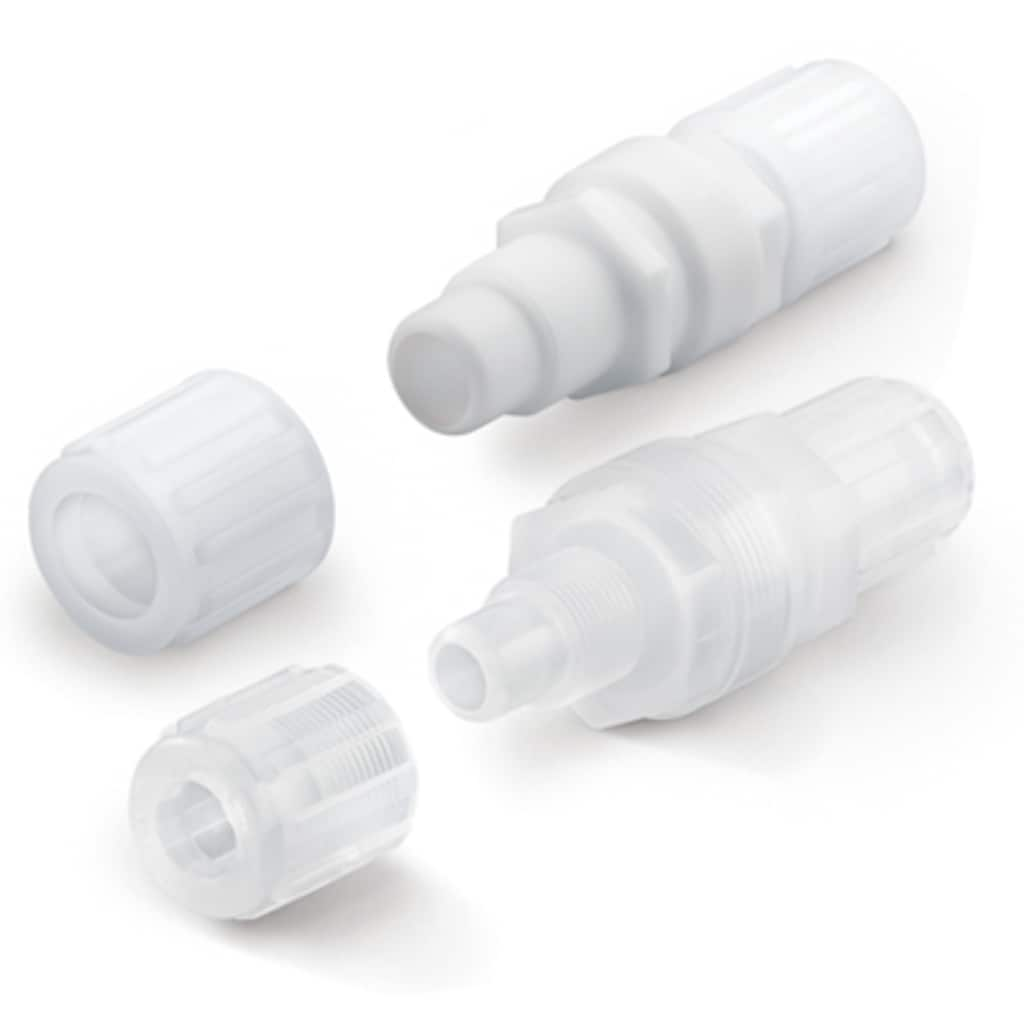
Полимерные обратные клапаны сверхвысокой степени чистоты, серия CHP
Для контроля обратного потока в системах сверхвысокой степени чистоты Swagelok предлагает фторполимерные обратные клапаны серии CHP сверхвысокой степени чистоты.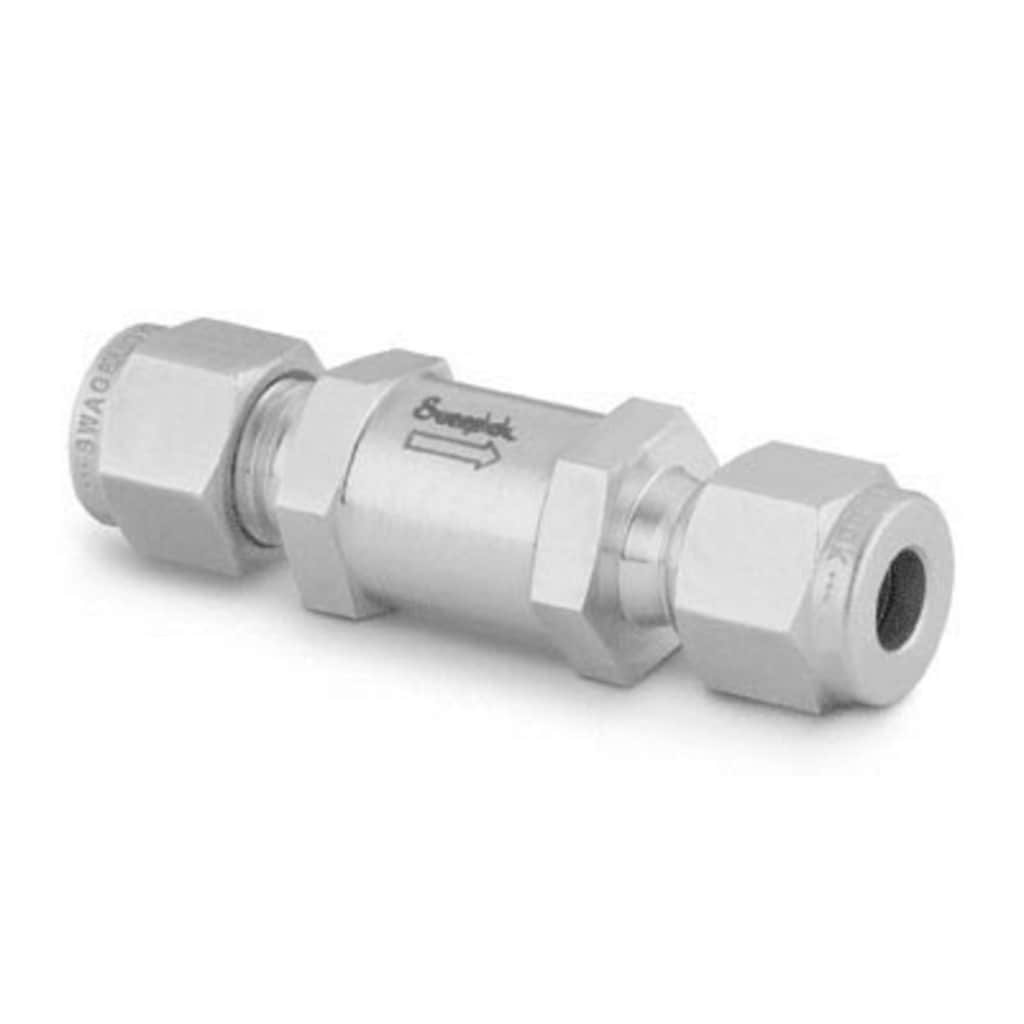
Тарельчатые обратные клапаны, серии C, CP, CH
В ассортименте представлены обратные клапаны из нержавеющей стали и латуни, с различными вариантами торцевых соединений, а также регулируемым/фиксированным давлением срабатывания.
체크 밸브 카탈로그
구성 재질, 압력 및 온도 등급, 옵션, 액세서리를 포함한 자세한 제품 정보를 찾을 수 있습니다.
Рабочее давление до 413 бар (6000 фунтов на квадратный дюйм, ман.); Регулируемые и фиксированные значения давления открытия; Различные варианты торцевых соединений; Материалы: нержавеющая сталь 316 и латунь
Характеристики: конструкция из нержавеющей стали 316; температура до 1000 °F (537 °C); фитинги среднего давления, диаметр от 1/4 до 1 дюйма, номинальное давление до 20 000 фунтов на кв. дюйм, ман. (1378 бар); фитинги высокого давления, диаметр от 1/4 до 9/16 дюйма, номинальное давление до 60 000 фунтов на кв. дюйм, ман. (4134 бар); предлагаются варианты исполнения, соответствующие стандарту NACE® MR0175 / ISO15156
Цельносварная конструкция обеспечивает надежное герметичное содержание среды системы.; Прямой поток запускается при разности давлений менее 0,14 бара (2 фунтов на кв. дюйм, ман.).; Клапан закрывается при обратном давлении менее 0,14 бара (2 фунтов на кв. дюйм, ман.).; Корпус из нержавеющей стали 316L обеспечивает повышенную чистоту материала.; Подходит для стандартной и сверхчистой обработки поверхностей, соприкасающихся со средой.; Возможна обработка в соответствии с Техническими условиями по сверхчистой обработке (SC-01) компании Swagelok®.; Предлагаются торцевые соединения под приварку встык, в виде фитингов с торцевым уплотнением VCR® с внутренней резьбой, неразъемных фитингов с торцевым уплотнением VCR с наружной резьбой, поворотных фитингов с торцевым уплотнением VCR с наружной резьбой и трубных обжимных фитингов Swagelok.
Features: Alloy 625, alloy 825, and Alloy 2507 super duplex stainless steel materials; Available for CH4 adn Ch8 series check valves; Working pressures up to 6 000 psig (413 bar); 1/4 to 1/2 in. Swagelok tube fitting or NPT end connections; Fixed cracking pressures: 1 to 25 psi (0.07 to 1.8 bar)
Features: Modified PTFE wetted components meet SEMI Standard F57-0301 for ultrahigh-purity system components; Fine thread flare and Nippon Pillar® Super 300 end connections; Low cracking and reseal pressure
Обратные клапаны Swagelok® с подъемным золотником предотвращают обратный поток при давлении до 413 бар (6000 фунтов на кв. дюйм) и температуре до 482°C (900°F).; Входной поток поднимает золотник, открывая клапан. Обратный поток размещает золотник поперек прохода, закрывая клапан.
Давление до 413 бар (6000 фунтов на кв. дюйм, ман.); Рабочая температура до 204 °C (400 °F); Торцевые соединения от 6 до 12 мм и от 1/8 до 1/2 дюйма; Конструкция из нержавеющей стали.
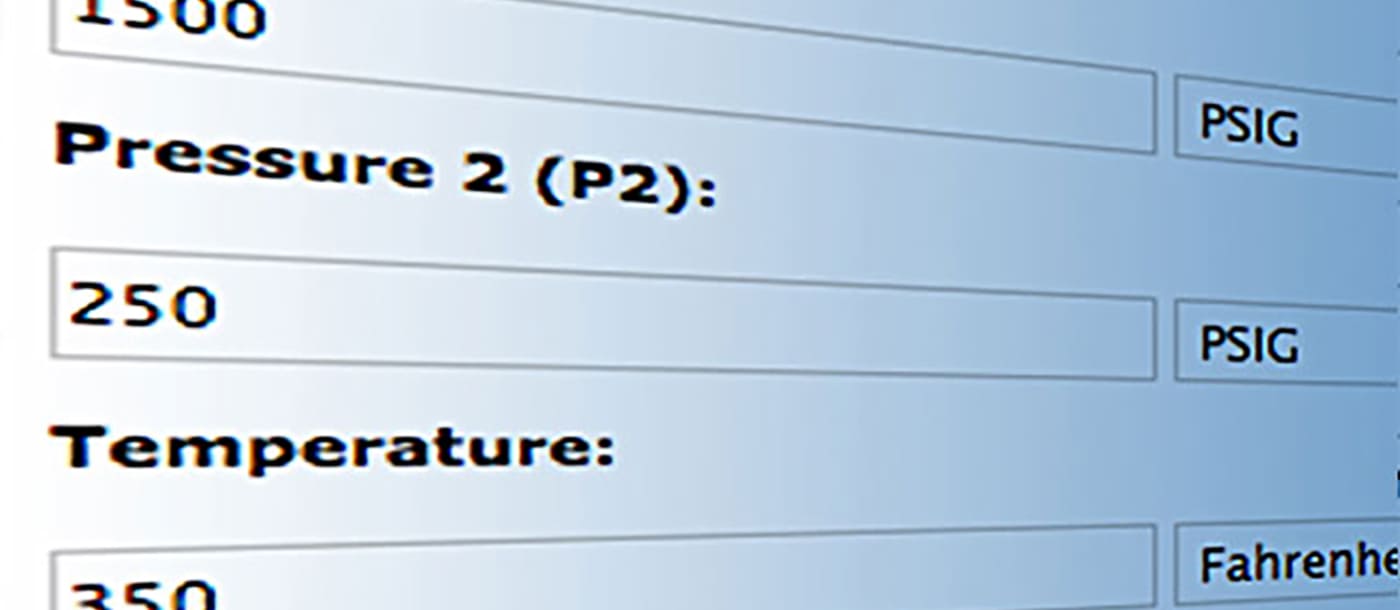
고객별 맞춤 선별 Swagelok 리소스
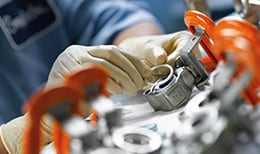
산업용 유체 시스템에 적합한 밸브를 선정하는 방법
산업용 유체 혹은 샘플링 시스템 설계 애플리케이션에 가장 적합한 밸브를 선정할 때 유용한 STAMPED 방법을 어떻게 적용하는지 소개합니다.

누출 저감(Low-E) 밸브로 비산 누출 비용 최소화
비산 누출은 화학 및 정유 산업에서 점점 더 큰 문제로 대두되고 있습니다. 인증 받은 누출 저감(Low-E) 밸브를 사용하면 시설과 수익성을 보호할 수 있습니다. 이 게시글에서 누출 저감 밸브가 무엇인지, 어떤 테스트를 거치는지, 플랜트에 어떻게 도움이 되는지 알아보십시오.
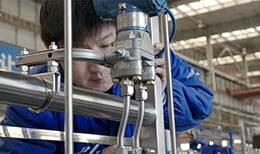
선양 고풍기 유한공사(Shenyang Blower Works Group)의 안전 및 신뢰성 개선 사례
선양 고풍기 유한공사(Shenyang Blower Works Group)가 안전과 생산 효율성을 개선하는 동시에, 일관성, 신뢰성, 고객 비용 절감을 실현할 수 있도록 Swagelok Shanghai가 어떻게 지원했는지 알아보십시오.
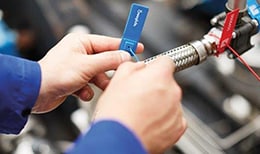
밸브 및 호스 태그로 유지보수 프로그램을 개선하는 방법
Swagelok 전문가 두 명이 산업용 유체 시스템 전반에 걸쳐 호스와 밸브에 견고한 태깅 시스템을 적용하여 유지보수를 간소화하고 시스템 가동 중단을 최소화할 수 있는 방법을 어떻게 설명하는지 읽어보십시오.

